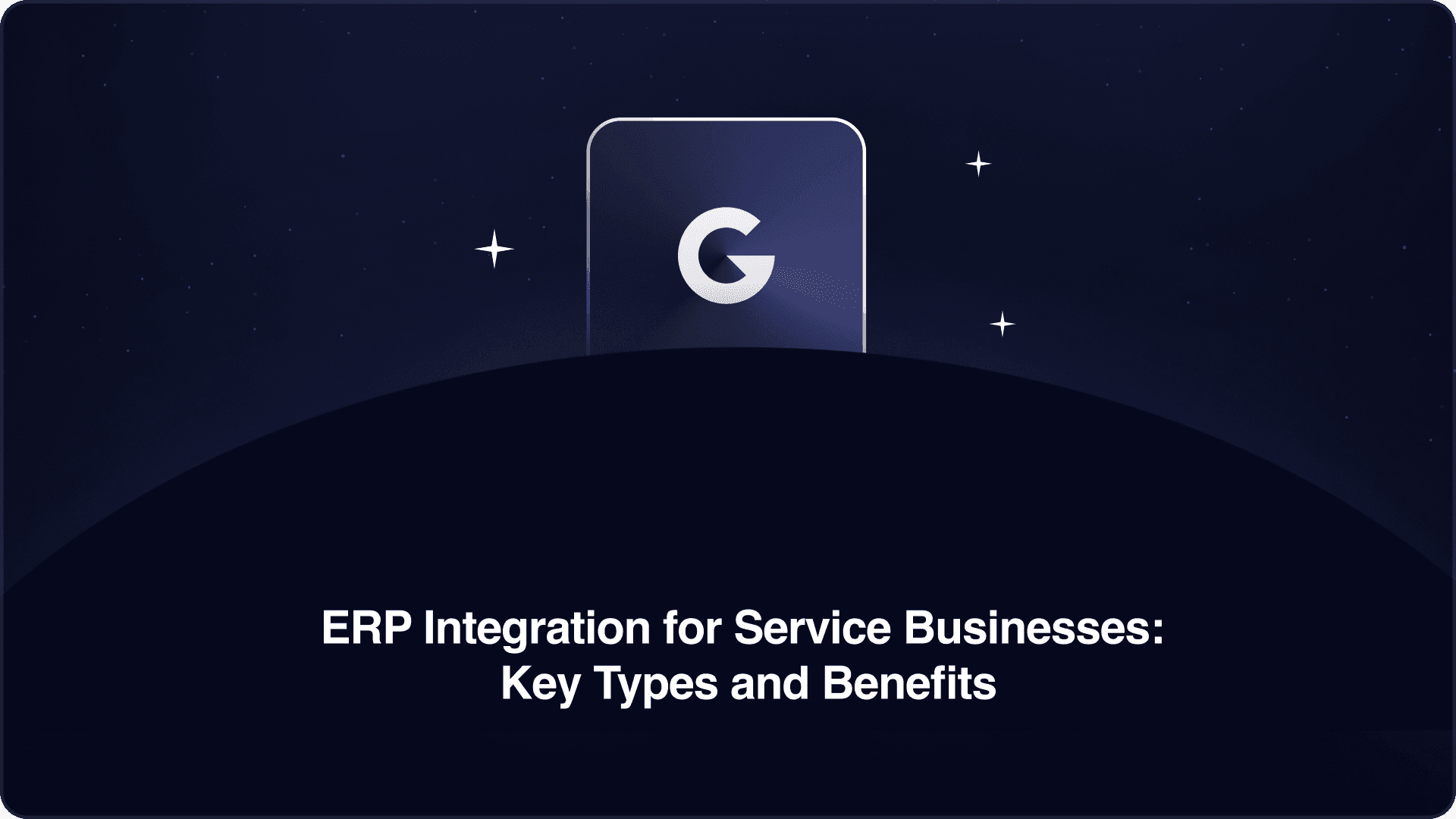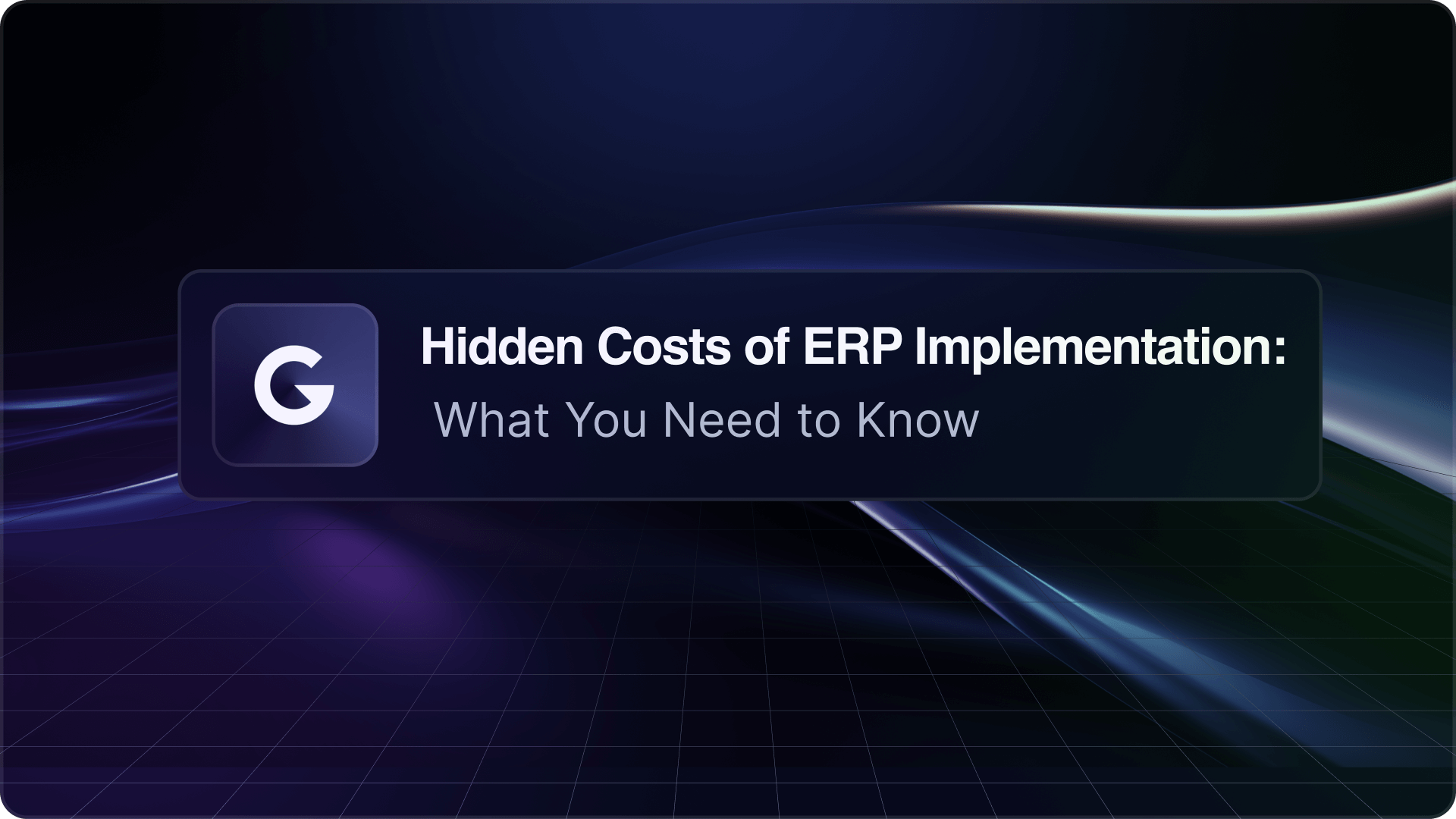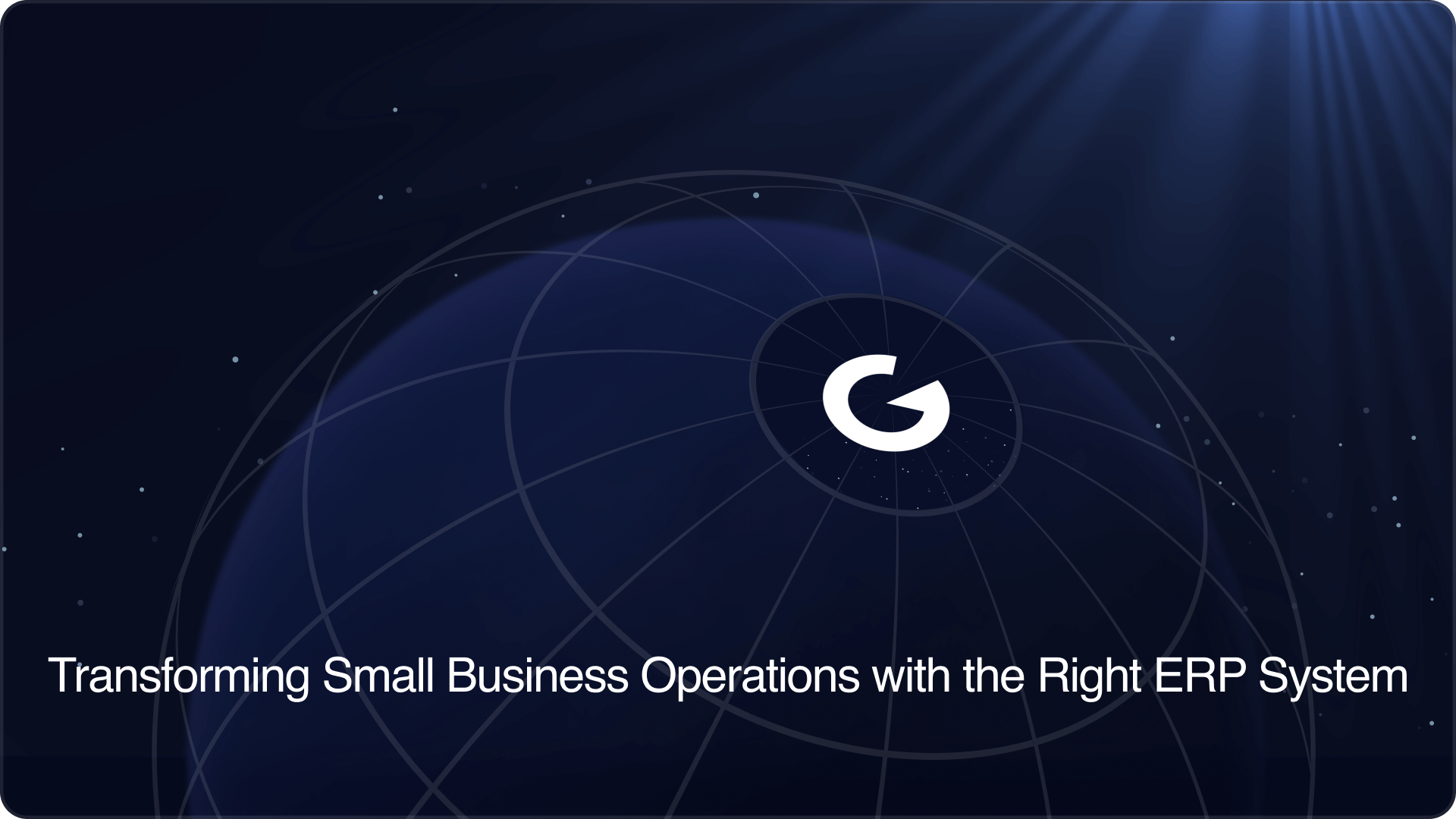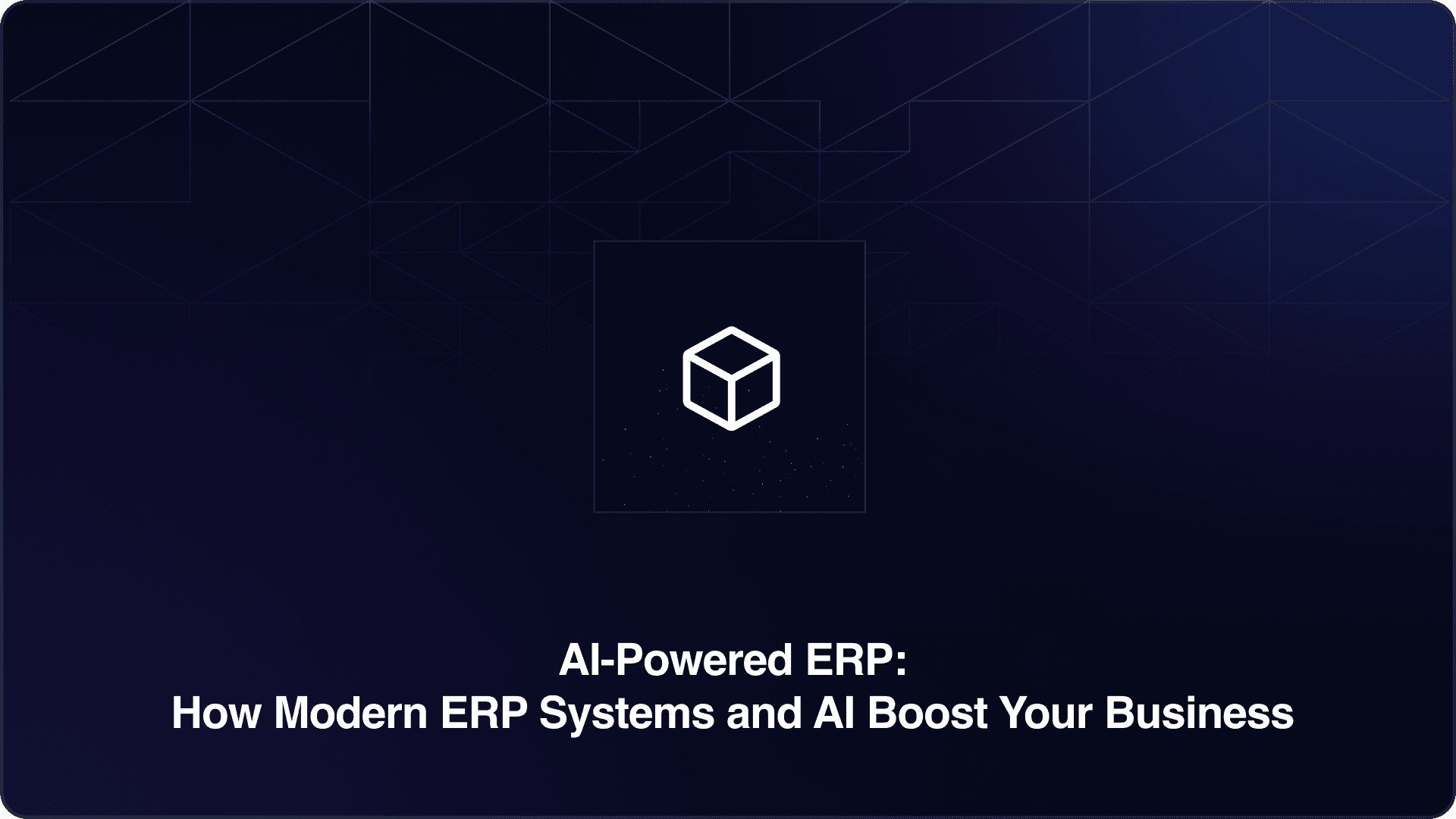Implementing an Enterprise Resource Planning (ERP) system is a transformative journey that touches nearly every aspect of an organization. This complex process requires a well-structured approach to ensure success and minimize disruption. A carefully crafted ERP implementation plan serves as a roadmap, guiding the organization through each stage of the project.
Are you looking for a comprehensive guide to successfully implement ERP to your business operation? This article will be helpful to you.
Let’s dive into it!
What is an ERP Implementation?
For many businesses, ERP systems are powerful tools designed to boost productivity and streamline operations. They achieve this by integrating various departments - from financial management and human resources to sales and manufacturing - into one centralized system.
An ERP implementation plan serves as a structured roadmap, detailing how your business will seamlessly integrate an ERP solution into your existing operating system. The primary objectives of this plan are to ensure your team has:
- A clear, well-defined approach for introducing the new ERP system
- Perfect alignment between the ERP system and your business processes
- Effective management of the project timeline and budget
- A strategy for smooth transition that minimizes business disruption
Without a robust implementation strategy, your ERP rollout could face significant challenges. Project delays, budget overruns, and even system failure are all potential risks of a poorly planned implementation. A comprehensive strategy helps your business to ensure efficient use of resources, maintain project timelines, and tailor the ERP system to your unique business requirements.
8 Key Stages of an ERP Implementation Plan
Implementing an ERP system is a complex, multi-phased project that demands meticulous planning and execution across various stages. Since each business is unique, the phases may vary somewhat depending on the company. Below, you will get to know most critical steps of an erp implementation project:
- Understanding Your Business Requirements:
The first step before starting any ERP implementation project is to research and understand your current business processes. This involves key steps:
- Conduct Stakeholder Interviews: Engage with representatives from all affected departments, such as Sales, Finance, Human Resources, and Operations, to gather insights into their unique processes and challenges.
- Analyze Current Workflows: Document existing business processes to pinpoint inefficiencies, redundancies, or gaps.
- Define Reporting and Dashboard Needs: Determine the types of reports and dashboards required to monitor ERP performance.
- Develop a Business Case: Create a compelling business case that outlines how the ERP system will enhance profitability, efficiency, and productivity.
- Ensure Organizational Alignment: Align leaders from various departments their needs and expectations. This step is crucial to avoid conflicts and ensure that the ERP solution meets the collective requirements of the organizationCollaborative Approach: Foster a collaborative environment where stakeholders feel involved in the decision-making process.
The goal of these above steps is to understand how an ERP system can address these issues by automating processes, improving data accuracy, and facilitating better decision-making.
2. Selecting the Right ERP System
Not all ERP systems are the same and fit for all business types, so it's essential to choose the one that aligns with your business needs. Whether you opt for a cloud-based ERP system or an on-premises solution, ensure it has the flexibility and scalability to grow with your company.
Evaluate potential solutions for their ability to integrate with your current system, and make sure they support your industry-specific needs. Some major criteria to consider are features of the software, its scalability, development costs, and reputation of the vendor.
3. Project Planning and Management
Once you've selected the right system, it's time to develop a detailed plan. This involves:
- Defining clear project goals, milestones, and deliverables
- Assigning roles and responsibilities to team members
- Establishing communication protocols and reporting mechanisms
- Creating a risk management plan to identify and mitigate potential challenges
- Developing a change management strategy to ensure user adoption
The Project Charter serves as the foundation of your planning process, keeping your ERP implementation on track and ensuring that all team members are aligned and working towards the same goals.
4. Budgeting and Resource Allocation
Knowing accurate estimation costs for an ERP software will significantly improve the success of the project as this will help your business to avoid unexpected expenditures that could jeopardize the project's success.
In addition, resource allocation or human resources needed to execute the implementation process is also a critical aspect. Staff distribution should not only focus on IT experts responsible for the ERP setup but also include key users from different departments who can offer critical input during the configuration and testing stages.
Adequate allocation of both financial and human resources is vital for a successful ERP implementation. It guarantees that the project is equipped with the required funding and qualified personnel to tackle challenges and achieve its objectives.
5. Data Migration and Integration
Moving your existing data (Data Migration) into the new ERP system is a critical and often challenging step. Therefore, it needs careful planning to ensure data accuracy and integrity. Start by assessing the current data to determine what should be migrated, and cleanse it to eliminate redundancies and errors. This step helps maintain data integrity. In addition, selecting appropriate migration tools and methods based on data complexity and volume.
Integrating the ERP system with current systems is also essential. This ensures the new ERP software works well with existing systems, like CRM and supply chain management tools. The aim is to facilitate smooth information flow, reduce data silos, and improve efficiency. Effective integration requires detailed planning, often necessitating customization or interface development for compatibility with existing systems.
6. Training and User Adoption
An ERP system is only as effective as its users’ ability to operate it efficiently. Hence, training and user adoption play a pivotal role in driving the success of implementation efforts. Essential components of this stage include developing training materials, conducting user training, providing ongoing support, and encouraging participation and feedback.
Developing effective training materials, such as user manuals, online tutorials, and hands-on sessions, equips users with the knowledge to navigate the new system. These materials should cover the system's features, workflows, and best practices to promote user confidence and proficiency. Offering varied training formats, from classroom sessions to one-on-one coaching, helps users become proficient in using the system and encourages their sustained engagement and utilization.
Providing ongoing support and assistance post-training ensures that users have access to help when they encounter challenges. This encourages continued use of the system, as users know they can rely on the support team to address any issues or questions that may arise. Gathering user feedback during and after training sessions also contributes to continuous improvement efforts, as organizations can address users' concerns or suggestions to enhance the overall user experience and drive greater user adoption of the new system.
7. Testing and Quality Assurance
Testing and Quality Assurance (QA) are essential in ERP implementation to ensure the system works properly and meets business needs. Comprehensive testing is necessary to find and fix problems before the system launches, reducing interruptions to operations.
During the process of implementation, businesses often conduct various types of testing, such as: Unit testing focuses on individual components of the ERP system, system testing for evaluating the comprehensiveness of an ERP system. User Acceptance Testing (UAT), on the other hand, helps businesses to reflect real-world usage and acts as the final check before the system is rolled out.
Compliance with business requirements is also a crucial aspect of quality assurance. This makes sure that the ERP system aligns with the organization's workflows, supports key processes, and adheres to any industry regulations, delivering the expected improvements and efficiencies.
8. Go-Live and Post-Implementation Support
The Go-Live and Post-Implementation Support phase is a key stage in ERP implementation, transitioning from development to operation. Key actions in this stage include:
- Develop a Go-Live Strategy: Creating a clear plan for launching the new ERP system—including system cutover, data synchronization, and contingency measures—ensures that the transition proceeds smoothly.
- Prepare for Cutover: Prioritizing data integrity, establishing system redundancy, and implementing backup procedures are essential to safeguarding against potential losses during the transition.
- Implement System Launch: Transitioning to the new ERP system requires careful execution, with ongoing monitoring to troubleshoot any issues that arise during the switch.
- Conduct Post-Launch Review: Evaluating the success of the launch, identifying challenges, and implementing necessary adjustments ensures that the new system meets organizational needs and functions as intended.
Navigating the ERP Implementation Journey: What to Expect Along the Way
The timeline for an ERP implementation project can vary depending on the size and complexity of your organization, the scope of the project, and the specific ERP system you choose. However, as a general rule of thumb, you can refer to the common timeline following:
- Small businesses (less than 100 employees): 6-12 months
- Mid-sized businesses (100-1000 employees): 12-18 months
- Large enterprises (more than 1000 employees): 18-24 months
Typically, ERP implementation takes an average of 21 months. However, many businesses enter the process with unrealistic expectations, hoping for rapid results within a few months, often due to sales hype. This disconnect between expectation and reality can lead to frustration and feelings of failure. In reality, the implementation process is often complex and involves not only technical setup but also significant changes in business processes, extensive employee training, and careful planning.
Key Takeaway for a effective and realistic implementation duration:
- Benchmark to other organizations: Compare your timeline with similar businesses. Most ERP projects average 21 months, so avoid setting unrealistic expectations based on vendor promises of faster deployments.
- Be Skeptical of Quick Fixes: Some ERP Vendors may pitch solutions that promise rapid implementation, but remember that changing business processes and training staff takes time—more than sales pitches often suggest.
- Prioritize Strong Project Governance: Keep tight controls on scope, customization, and decision-making to prevent delays. Clear governance ensures your project stays on track.
- Anticipate Common Delays: ERP projects often hit snags with data migration, process reengineering, and change management. Plan for these potential setbacks from the start.
- Create a Detailed Plan: Go beyond vendor recommendations and make sure your implementation plan covers all critical aspects, including training and operational shifts, to avoid timeline overruns.
Metrics to measure a Successful ERP Implementation
To evaluate the implementation accurately, businesses need to define and track key metrics aligned with their specific objectives. Here are some of the most crucial Key Performance Indicators (KPIs) to consider:
Achievement of Business Goals and KPIs
Establish clear objectives before implementation and measure whether these goals are met post-implementation. Common goals include cost reduction, revenue growth, and improved customer satisfaction. Regularly monitor Key Performance Indicators (KPIs) to assess ongoing performance against these objectives.
Return on Investment (ROI)
Calculate ROI by comparing the costs associated with the ERP implementation (including software, training, and maintenance) against the financial benefits gained from increased efficiencies, revenue growth, and reduced operational costs. A shorter payback period indicates a more successful implementation.
Process Automation and Productivity Improvements
Evaluate the extent to which the ERP system automates previously manual processes. Measure productivity by assessing employee efficiency and the reduction of time spent on repetitive tasks. Increased productivity often correlates with effective ERP utilization.
Improved Data Insights and Decision-Making
Assess the quality and accessibility of data provided by the ERP system. Improved reporting capabilities and real-time data access should enhance decision-making processes at all organizational levels. This can be measured through user satisfaction surveys and the speed of decision-making.
Customer Experience Enhancements
Measure improvements in customer satisfaction and engagement as a result of the ERP implementation. This can include tracking metrics such as customer feedback, response times, and service levels. A positive shift in customer experience indicates successful ERP integration.
Cost Control and Reduction
Monitor the ERP's effectiveness in controlling costs across various departments, including IT, labor, and inventory. A successful implementation should lead to reduced costs in these areas, contributing to overall financial health.
User Adoption and Satisfaction
Assess how well users have adopted the new ERP system through training feedback, usage statistics, and satisfaction surveys. High user acceptance is crucial for maximizing the system's benefits and ensuring that employees feel confident in using the new tools.
Intangible Benefits
Consider the less quantifiable benefits that may arise from the ERP implementation, such as enhanced employee morale, improved collaboration, and greater agility in responding to market changes. While these may be harder to measure, they can significantly impact overall organizational performance.
By regularly reviewing these metrics, organizations can not only gauge the success of their ERP implementation but also identify areas for continuous improvement, ensuring that the system delivers lasting value.
Key takeaway:
Three pillars of successful ERP implementation:
- Skilled Workforce (People with the right skills): Ensuring that your team possesses the right skills is essential for effective ERP implementation. This includes not only technical expertise in the ERP system but also a deep understanding of business processes. Investing in training and development will empower employees to utilize the system effectively.
- Optimized Business Processes: Before implementation, businesses should conduct a thorough analysis of existing workflows to identify inefficiencies and areas for improvement. By aligning the ERP system with optimized processes, you can enhance productivity, reduce costs, and improve overall operational efficiency.
- Leverage appropriate technology: This involves selecting an ERP solution that aligns with your business's specific needs and goals. Scalability, integration capabilities, and user-friendliness are core factors to consider.
Common Challenges and Best Practices for ERP Implementation
Common pitfalls of ERP implementation and practical guide to avoid
Implementing an ERP system offers countless benefits, from streamlining operations to gaining real-time insights. However, ERP implementation is complex, and missteps along the way can derail the entire process. Here are some of the most common mistakes and tips on how to avoid them.
Lack of Full Executive Buy-In
One of the biggest reasons ERP implementations fail is the lack of support from key executives. Without their full buy-in, the project can lose momentum and lack proper alignment with business goals. To avoid this, ensure that executives are fully involved from the start, understand the importance of the project, and are committed to supporting it throughout the process.
Making It a Single Department Project
ERP systems are designed to integrate various business functions across departments. Treating it as a single department’s initiative defeats the purpose. Ensure that all relevant departments are involved in the process and connected to achieve a unified source of truth. This cross-departmental collaboration ensures better data visibility and maximizes the ERP's value.
No Internal Project Manager or Key Stakeholders
Relying solely on the ERP vendor's project manager is a recipe for disaster. It’s crucial to have a dedicated internal project manager who can oversee implementation, answer internal questions, and drive decision-making. Additionally, involving key stakeholders such as department heads ensures that the system aligns with specific departmental needs.
Not Preparing for ChangeERP implementation often requires significant changes to existing processes. Not anticipating these changes can lead to resistance and failure. Make sure your system is flexible enough to adapt to evolving business needs. A key strategy is to select customizable ERP solutions that can grow and change alongside your business.
Lack of Adequate TrainingEven the best ERP systems are useless if your team doesn't know how to use them. One major pitfall is neglecting to provide comprehensive training to staff. To avoid this, invest in extensive training sessions that not only teach the technical aspects of the system but also explain how it integrates with daily operations. This will lower resistance to change and improve adoption rates.
Inadequate DocumentationProper documentation is key to maintaining long-term success with your ERP system. Ensure that training materials, guides, and tutorials are in place and easily accessible for your staff. Well-documented processes reduce confusion, aid in troubleshooting, and help onboard new employees faster.
Avoiding these common pitfalls ensures that your ERP implementation stays on track, delivers value, and positions your business for success.
Best practices for ensuring ERP implementation success
Achieving success with ERP implementation requires a combination of strategic planning, cross-functional collaboration, and adherence to key best practices. Here are several best practices that can guide your ERP implementation to a successful outcome:
- Set Clear Goals and Objectives: Before the implementation begins, ensure that you have clearly defined goals and objectives. What do you want to achieve with the ERP system? Whether it’s improved efficiency, better data management, or enhanced reporting, having measurable goals allows your team to stay focused on outcomes.
- Prioritize Change Management: Change management is often underestimated during ERP implementation. Successful implementation requires not only changing systems but also changing behaviors, processes, and mindsets. Make sure you invest in communication and training that prepare your team for the transition.
- Ensure Comprehensive Testing: Testing is critical to identify and resolve issues before full deployment. Don’t rush through the testing phases—unit testing, system testing, and User Acceptance Testing (UAT) are all essential to ensuring the ERP system works as expected and supports real-world scenarios.
- Keep the Team Aligned: Collaboration is key in ERP projects. Ensure that your team members across different departments are aligned and actively engaged. Regularly scheduled meetings and progress updates can prevent miscommunication and keep everyone focused on the common goal.
- Choose the Right Partner: Picking the right ERP vendor or implementation partner is critical. A partner with proven industry experience can offer valuable insights, best practices, and support throughout the entire project. Take the time to thoroughly vet your ERP partner before proceeding.
Final Note
Implementing an ERP system is a significant undertaking, but with careful planning and execution, it can be a game-changer for your business. By following the key stages outlined in this guide and leveraging best practices for ERP implementation success, you can streamline your operations, improve data visibility, and drive growth.
Remember, successful ERP implementation is not just about deploying the software; it's about aligning people, processes, and technology to achieve your business goals. By investing in a comprehensive ERP implementation plan and working with experienced ERP consultants, you can ensure that your ERP system becomes a strategic asset that supports your long-term success.







